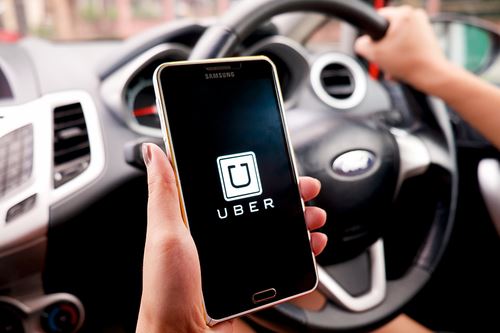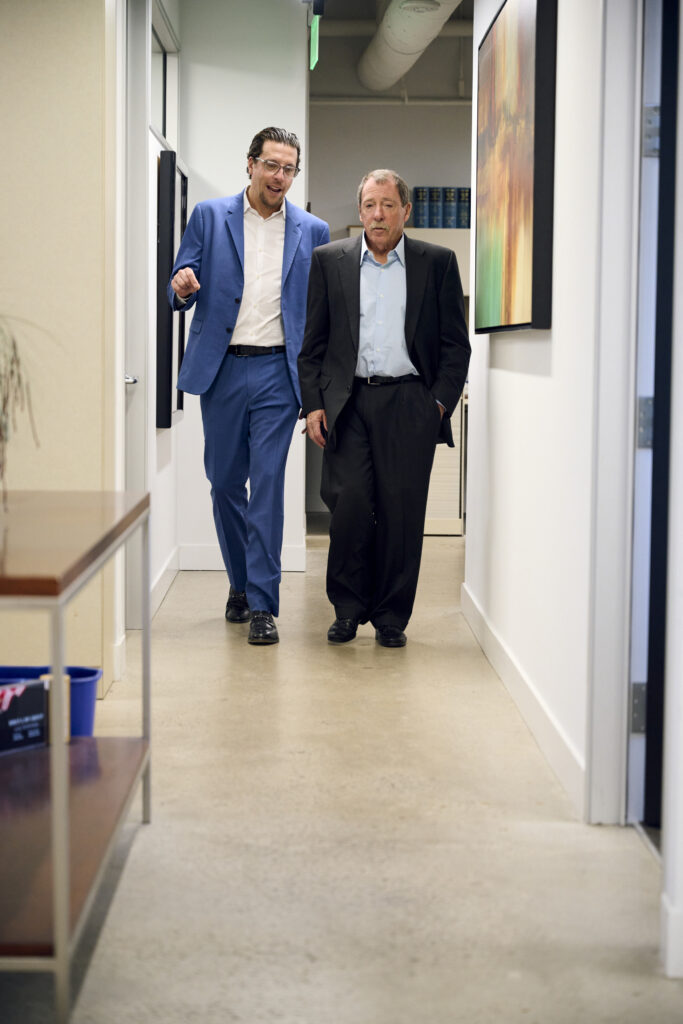Brentwood Rideshare Accident Attorneys
Over the past several years, ridesharing services such as Lyft or Uber have experienced a significant surge, especially in high-traffic and metropolitan areas such as Brentwood and the greater Los Angeles area. With such companies on the rise, it begs the question: who do you hold accountable or liable if you’re injured in an accident involving an Uber or Lyft?
Drivers who work for rideshare apps, such as Lyft, are technically considered independent contractors, and not employees – in the event of an accident, the company can deny liability for a collision that involves one of their drivers. If you’re pursuing legal action after an accident involving Lyft or Uber, the driver would be held liable instead of the entire company.
Because these types of cases are more complex, you should not hesitate to contact an experienced and trusted attorney from Biren Law Group.
Overview of Rideshare Accidents

Rideshare accidents encompass a wide range of incidents involving vehicles operated through platforms like Uber and Lyft. These accidents occur when a rideshare driver is involved in a collision, often blurring the lines between personal and commercial transportation. Common scenarios include rear-end collisions during heavy traffic, side-impact crashes at intersections, pedestrian strikes near pickup zones, or multi-vehicle pileups on highways. Passengers might be injured while en route to their destination, drivers could face harm from aggressive road users, and third parties—such as other motorists or cyclists—may collide with a rideshare vehicle distracted by app navigation.
In bustling areas like Brentwood and Los Angeles, where ridesharing is ubiquitous, these incidents spike due to congested roads and high demand. What makes rideshare accidents unique is the interplay of technology, independent contractors, and corporate policies, turning a simple fender-bender into a complex legal puzzle.
What Causes Rideshare Accidents?
Rideshare drivers juggle multiple demands, leading to accidents rooted in human error and external pressures.
- Distracted driving tops the list, as drivers frequently glance at their phones for GPS directions, ride requests, or passenger communications—contributing to a significant portion of crashes.
- Fatigue is another major culprit; many drivers work extended shifts across platforms to maximize earnings, impairing reaction times and judgment similar to driving under the influence.
- Speeding often occurs when drivers rush to meet pickup times or complete more fares, exacerbating risks in urban environments.
- External factors like poor road conditions, inclement weather, or aggressive behavior from other drivers compound these issues.
- Additionally, unfamiliar routes can lead to sudden maneuvers, while unsafe pickup or drop-off locations—such as busy curbsides—invite pedestrian accidents.
Understanding these causes highlights the need for vigilance and underscores why victims should seek expert legal guidance to pinpoint fault.
Types of Rideshare Accidents
Rideshare accidents vary in form but share the potential for severe consequences.
- Rear-end collisions are prevalent, often happening when a distracted driver fails to brake in time during stop-and-go traffic.
- Side-impact crashes, or T-bone accidents, frequently occur at intersections where rideshare vehicles make quick turns to reach passengers.
- During passenger pick-up or drop-off, low-speed incidents like dooring—where a door opens into oncoming traffic—or pedestrian strikes are common in crowded urban spots.
- Multi-vehicle incidents arise on freeways, where a rideshare driver’s fatigue might trigger a chain reaction.
- Other types include head-on collisions from wrong-way driving or rollover accidents due to speeding on curves.
Each type demands a nuanced investigation, as evidence like app data or dashcam footage can reveal critical details about the sequence of events.
What Injuries Often Result from Rideshare Accidents?
Victims of rideshare accidents often endure injuries that disrupt lives far beyond the crash site.
- Whiplash, a neck strain from sudden jolts, is one of the most frequent, leading to chronic pain and months of physical therapy.
- Fractures, ranging from broken arms to shattered legs, require surgeries, casts, and extended recovery, racking up medical bills in the tens of thousands.
- Head trauma, including concussions or traumatic brain injuries (TBI), can cause cognitive impairments, headaches, and long-term neurological issues, affecting work and relationships.
- Spinal cord damage might result in paralysis, while internal injuries like organ lacerations demand emergency interventions.
These harms not only impose hefty costs but also emotional tolls, such as anxiety or PTSD. Prompt medical attention and legal support are crucial to secure compensation for both immediate and future needs.
Who Is Liable in a Rideshare Accident?
Determining liability in rideshare accidents involves untangling a web of parties and circumstances.
- The rideshare driver may be at fault for negligence, such as texting while driving, but the company, for example, Uber or Lyft, could share responsibility if inadequate background checks or vehicle maintenance contributed.
- Third-party drivers often bear blame in collisions where they rear-end a stopped rideshare vehicle.
- Other entities, like vehicle manufacturers for defective parts or municipalities for poor road design, might also be liable.
Factors like the driver’s app status at the time—offline, waiting for a ride, or transporting passengers—play a pivotal role, as they dictate insurance applicability.
Proving fault requires evidence such as witness statements, traffic camera footage, and accident reconstructions, making experienced legal representation essential to hold the right parties accountable.
How Do Rideshare Company Insurance Policies Work?
Uber and Lyft provide tiered insurance coverage that activates based on the driver’s activity phase, ensuring compliance with California’s stringent requirements. In phase one, when the app is off, only the driver’s personal auto insurance applies. In phase two (app on, waiting for a request), both companies offer contingent liability: $50,000 per person/$100,000 per accident for bodily injury and $25,000 for property damage. During phase three (en route to pickup or with a passenger), coverage escalates to $1 million in liability per accident, plus $1 million in uninsured/underinsured motorist (UM/UIM) protection in California. This $1 million policy is mandated by state law for transportation network companies (TNCs), providing robust protection but with potential deductibles up to $2,500.
Gaps may exist if personal policies deny claims, emphasizing the importance of consulting an attorney to maximize recovery from all available sources.
How Does Negligence Factor into Rideshare Accident Lawsuits?
Proving negligence is the cornerstone of rideshare accident lawsuits, requiring evidence that the driver or company breached a duty of care, causing harm. Driver errors, like ignoring traffic signals or driving fatigued, establish direct negligence. Company policies may contribute if insufficient training or vehicle inspections led to the crash.
We demonstrate this through black box data, expert testimony, and comparative fault analysis, where California’s pure comparative negligence rule allows recovery even if you’re partially at fault. By highlighting failures, such as a driver’s history of violations overlooked by Uber/Lyft, we build compelling cases that withstand scrutiny.
What Are My Rights as a Passenger in a Rideshare Accident?
As a passenger in an Uber or Lyft, you hold strong legal protections under California law, entitling you to compensation for injuries regardless of who caused the crash. You can file claims against the at-fault driver’s insurance, the rideshare company’s policy, or even your own uninsured motorist coverage if needed. Rights include access to medical treatment, lost wages reimbursement, and pain and suffering damages.
Documenting the incident via the app’s trip history, photos, and medical records is key to building a case. Rideshare companies must report accidents promptly, but they may minimize liability, so acting swiftly preserves evidence. Passengers can also pursue settlements or lawsuits, with the $1 million policy offering substantial recourse during active trips. Engaging a knowledgeable attorney ensures your rights are upheld against corporate defenses.
Third-Party Claims in Rideshare Accidents
If a non-rideshare driver or entity causes a crash—such as a motorist running a red light and hitting your Uber—you can pursue compensation through a third-party claim. Start by targeting the at-fault party’s auto insurance to cover medical expenses, vehicle repairs, or other losses. If their coverage is insufficient, Uber or Lyft’s $1 million uninsured/underinsured motorist (UM/UIM) policy in California can bridge the gap during active trip phases.
Gather evidence like police reports, witness statements, and photos to support your claim. In California’s at-fault system, your own insurance may provide limited benefits, but coordination is key to avoid conflicts like subrogation. An attorney simplifies this process, ensuring all responsible parties are held accountable and maximizing your recovery without personal financial strain.
Why Hire a Rideshare Accident Attorney?
Navigating rideshare claims demands specialized expertise, as these cases blend personal injury, insurance law, and corporate accountability. Look for an attorney with a proven track record in Uber/Lyft litigation, strong negotiation skills, and resources for thorough investigations—like accident reconstruction experts. They can dismantle company defenses, such as classifying drivers as independent contractors to evade liability.
At Biren Law Group, our Brentwood rideshare accident attorneys excel in these complexities by leveraging our decades of experience and a client-first approach. We handle everything from evidence collection to settlement talks, allowing you to focus on healing. Choosing us means partnering with advocates who fight tirelessly for maximum compensation.
Filing a Rideshare Accident Lawsuit
Initiating a rideshare accident lawsuit begins with a free consultation at Biren Law Group, where we’ll evaluate your case’s merits based on the accident details and injuries. From there, we gather evidence: police reports, medical records, app data, and witness statements. Our team files the complaint in California court within the two-year statute of limitations for personal injury claims, preserving your right to sue. Discovery follows, where we exchange information and depose parties, uncovering negligence. Settlement negotiations often resolve matters pre-trial, but if needed, we litigate aggressively.
Throughout, we keep you informed, handle paperwork, and advocate for fair compensation. This client-centered process demystifies the legal system, turning a daunting ordeal into a path toward justice.
What Compensation Can You Recover in a Rideshare Accident Lawsuit?
Victims can recover various damages in rideshare lawsuits, tailored to their losses.
- Economic damages cover tangible costs: medical expenses (surgeries, rehab), lost wages from missed work, and property damage.
- Non-economic damages address intangibles like pain and suffering, emotional distress, and reduced quality of life—often substantial in severe injury cases.
- Punitive damages may apply if gross negligence, such as a company’s reckless disregard for safety, warrants punishment.
In California, there’s no cap on most personal injury damages, enabling full recovery. Our attorneys at Biren Law Group maximize these through detailed valuations, ensuring settlements reflect both current and future impacts.
What Challenges Arise in Rideshare Accident Cases?
Rideshare lawsuits present unique hurdles, starting with the driver’s independent contractor status, which companies use to shift blame and limit liability. Navigating corporate insurance policies demands expertise, as coverage phases create disputes over applicability. Evidence preservation is tricky—app data might be deleted—while multi-party involvement complicates fault allocation. Corporate legal teams aggressively defend, prolonging cases.
Overcoming these requires strategic litigation, as Biren Law Group provides, turning challenges into opportunities for accountability and fair outcomes.
Contact Biren Law Group for Effective Representation
The Brentwood Uber & Lyft accident attorneys at Biren Law Group understand the complexity of these types of claims and have the experience and resources you need in order to recover all the compensation you are owed.
Call our office at (310) 774-0078 or fill out an online contact form to get a free consultation of your case!

